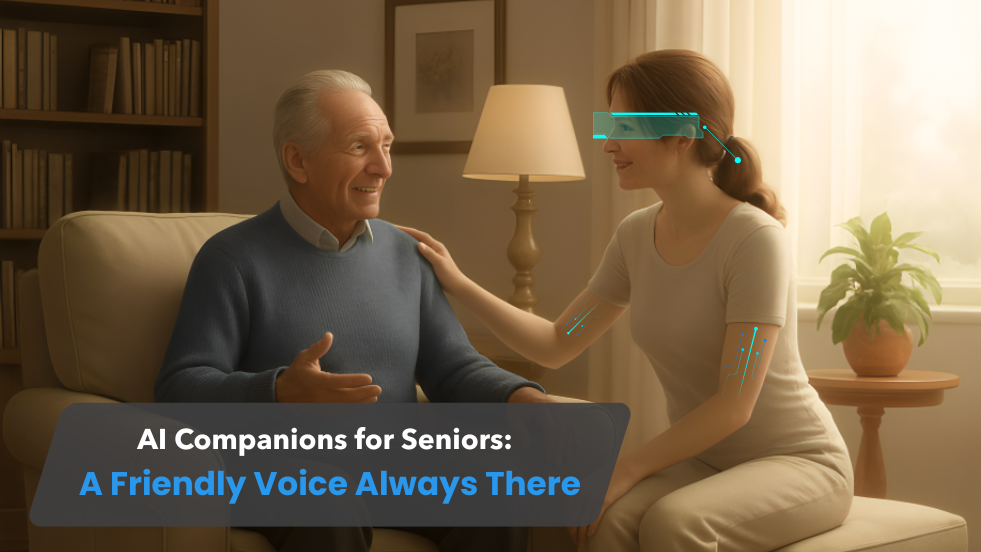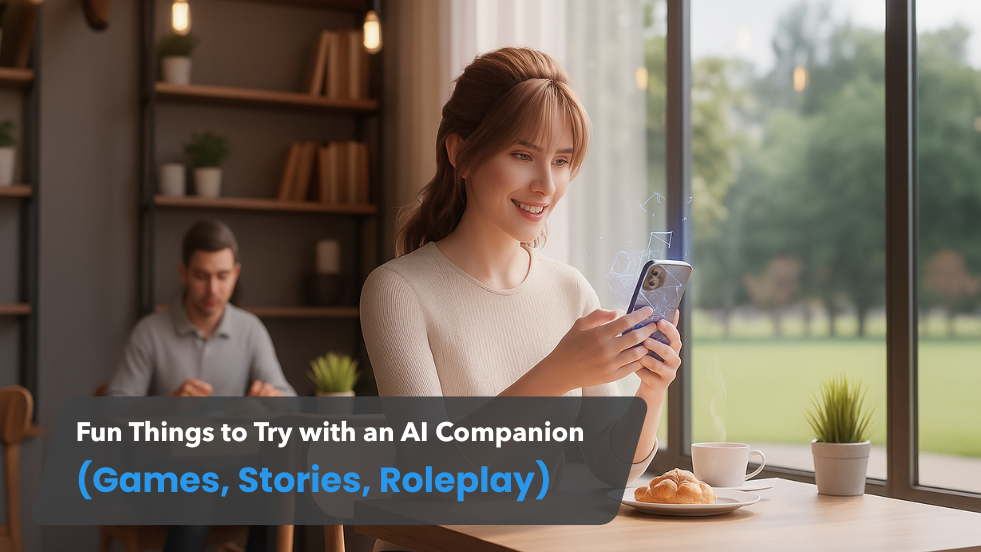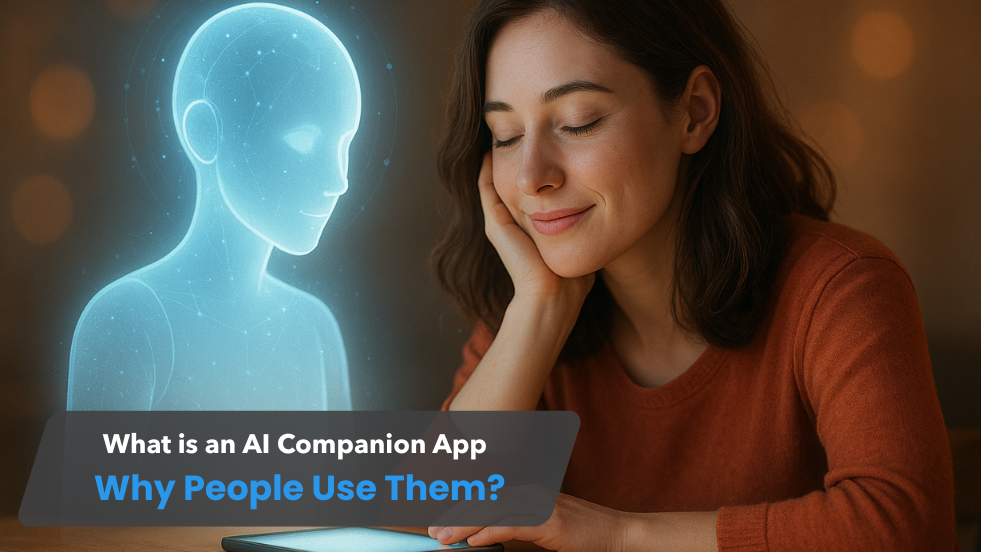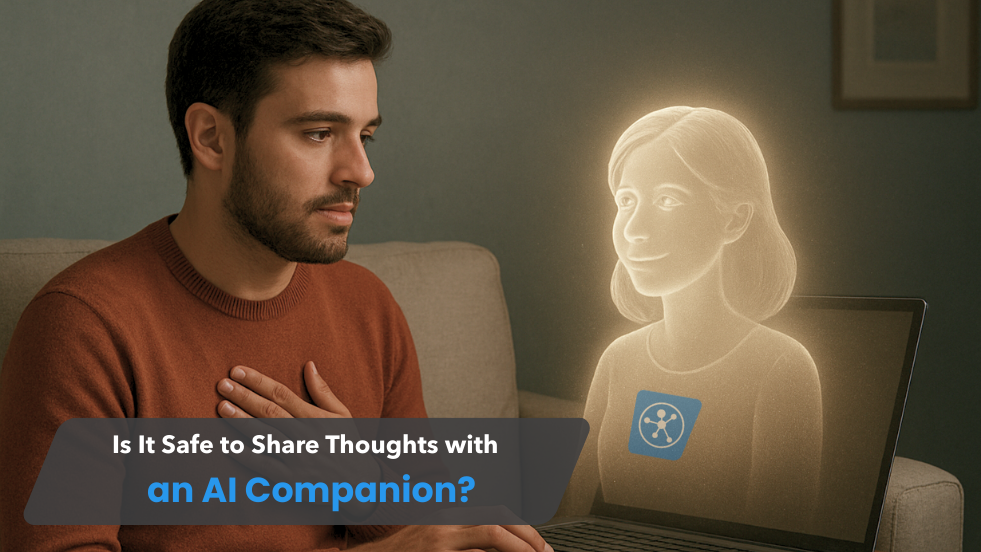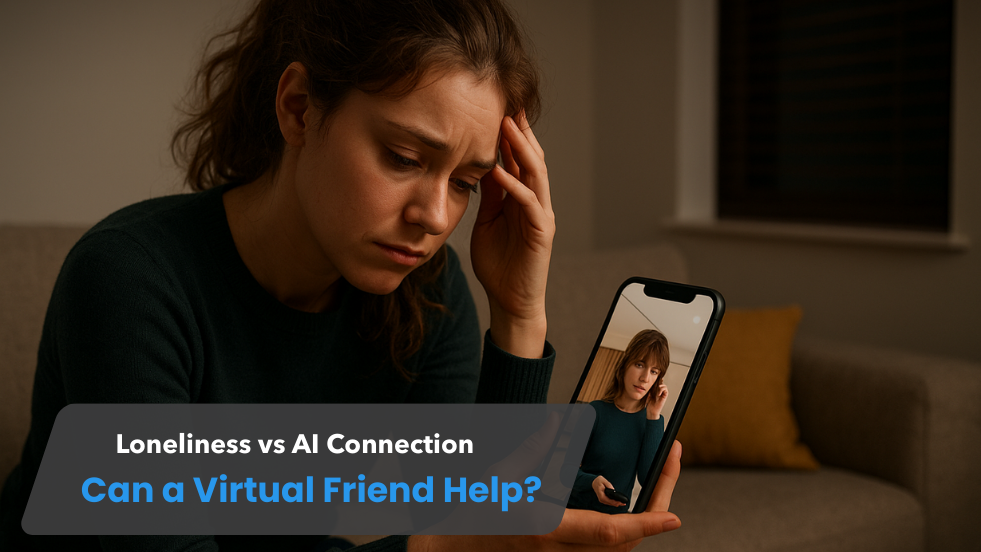Artificial Intelligence (AI) has revolutionized how we interact with technology. From voice-activated assistants such as Alexa as well as Siri to more sophisticated AI-driven assistants today, we live in a time where machines can comprehend, respond to, and even anticipate our demands.
However, here’s a question that many people are asking: “Aren’t AI companions just another version of virtual assistants?”
On the outside, they could appear identical. They both use natural language processing (NLP), they both respond to voice or text, and they both make life easier. However, there’s a fundamental difference between the two.
We’ll go into the world of AI companions as opposed to. virtual assistants. Learn about the differences between them in terms of function, purpose and emotional depth and the reasons AI companions are seen as a “next leap” in human-AI interactions.
Defining the Basics: Virtual Assistant vs. AI Companion
Before we look at them in a comparison before we do that, let’s first have the definition of.
Virtual Assistant
Virtual assistants are AI-powered devices designed to complete jobs, streamline workflows and also provide data. Popular examples include:
- Amazon Alexa – Controls smart devices and can answer questions.
- Apple Siri – Provides information scheduling reminders, schedules and helps in mobile applications.
- Google Assistant – Integrates with Google services and smart homes.
The focus here is on efficiency and productivity. They’re there to help you save time and to automate the daily chores.
AI Companion
An AI companion is, however, designed for human-to-human interaction and communication. Instead of only answering your queries or setting alarms the AI companion is built to:
- Engage in natural conversations.
- Know your moods and feelings.
- Empathize, companionship and presence.
- Discover your personal preferences, habits and your personality as time passes.
While a virtual assistant functions as an equivalent to your personal secretary an AI assistant feels more like an acquaintance, a partner or trusted.
The purpose is to increase productivity in comparison to. Emotional Connection
If we break it down to the bare essentials, the main difference is in the intent.
- Virtual Assistant – Productivity Tool
Their main job is to assist in tasks such as making sure the weather is correct, emailing, scheduling schedules, or even ordering food on the internet. - AI Companion – Emotional Engagement
AI companions are created to provide emotional and social assistance. They’re not only about efficiency, but making technology feel more like a human being.
Example:
In the event that you asked Alexa, “How was your day?” you’ll receive a general response.
If you do have an AI companion such as Emma in Personal Human AI, you’ll receive a conversation that feels intimate, adaptable and compassionate.
Conversation Style Command vs. Conversation
The way we interact with the various AI types can reveal their uniqueness.
- Virtual Assistants – Command-driven
- “Set an alarm for 6 AM.”
- “Play my workout playlist.”
- “What’s the weather today?”
- The interactions are brief and direct. They are also transactional.
- AI Companions – Conversational-driven
- “I feel stressed today.”
- “Can you remind me of that book we talked about yesterday?”
- “What do you think about my idea?”
- In this instance is where the AI is attentive, remembers then responds in a manner that is similar to human conversations.
This distinction is due to AI companions utilizing sophisticated NLP methods that not only analyse commands, but also sentiment, tone and the context.
Emotional Intelligence: Zero vs. High
The most intriguing distinction is emotion intelligence (EI).
- Virtual Assistants
- Limited to the literal comprehension.
- There is no way to discern the mood or emotion.
The answers are factual and unpersonal.
- AI Companions
- Created with emotion-based AI that detects the facial expressions of people, their voice and words.
- Mirror empathy and offer some comfort.
- Responds to emotional needs, not just to demands.
Example:
If you inform an assistant virtual “I’m feeling lonely,” it may just go to the internet and search for articles about loneliness.
However, an AI companion could tell you “I’m there for you. Would you like to discuss anything in your head?”
This difference of being heard and comprehended is the reason that is what makes AI companions so special.
The Presence of Utility. Relationship
If you think about the concept of presence, there’s an additional layer that makes AI companions distinct from each other.
- Virtual Assistants only exist when you require them. They’re inactive until they’re activated.
- AI Companions are able to display an autonomous presence. This could mean they decide to take the initiative or keep track of you, or even actively engage.
For instance:
- A virtual assistant is waiting for your commands: “Play music.”
- An AI companion might say: “You seem a little quiet today. Do you want me to play some music to relax?”
This approach is proactive and creates the impression of a continuous relationship instead of a tool that you simply “use.”
Learner’s Style: Task-Oriented and. Personality-Oriented
Another major difference is the way they get to know the person you are.
- Virtual Assistants can learn about functional information:
- Your most-loved playlist.
- Your recurring alarms.
- Your search past.
- AI Companions are trained to learn their personal and behavioral characteristics:
- Your mood changes.
- Your conversational style.
- You are triggered by your emotions.
- Your interests and goals in life.
As time passes the AI friend you have become more like an individual that “knows” you instead of simply an individual that “assists” you.
Environment: Task Automation vs. Immersive Presence
Virtual assistants are connected with devices (like smart houses), AI companions often blend avatars, images, and a sense of presence.
- Virtual Assistants: Voice first screen-based.
- AI Companion = 3D avatars, VR/AR-based environments real-life visuals.
A few AI-powered companions from the next generation provide realistic avatars that show body language and facial expressions to bridge the gap between machine and human interaction.
This means that the experience isn’t only functional, but also emotional.
The Trust Factor: Transactional as opposed to. Personal
The issue of trust is a different angle from which AI friends differ.
- Virtual Assistants: Customers typically are concerned about the data they collect and the amount of information tech companies have access to their personal lives.
- AI Companion Platforms: Many platforms are now focusing on local data storage as well as privacy-first design so that users are comfortable sharing their personal information.
As AI companions are frequently used to conduct private conversations, trust and openness are essential to the adoption.
Real-World Applications: Comparing Use Cases
Let’s get it done by comparing how each excels.
Virtual Assistants Are Best For:
- Intelligent home automation.
- Information retrieval (weather news, traffic, weather).
- Scheduling and reminders.
- Productivity-related tasks.
- Automated shopping online.
AI Companions Are Best For:
- The battle against loneliness.
- Practicing social skills.
- Emotional support during stress.
- Creative brainstorming.
- Personalized conversations over the long term.
In essence, virtual assistants assist you in managing your life and AI companions can enhance your life.
The Future: Convergence or Separation?
The question is, can AI associates with virtual assistants one day merge into one?
- Potential 1: Convergence Virtual assistants are able to adopt emotional intelligence and depth of conversation and become more human-like.
- Option 2: Differentiation Virtual assistants are still task-driven while AI companions develop into a distinct category of human-AI interactions.
With the speed at which AI is growing it is possible that we will discover hybrid models which can organize a meeting and relax you during times of stress.
Why It Matters: The Human Side of AI
In the end, the differentiator of the two AI companions and an assistant virtual isn’t only about features, it’s about human requirements.
- Virtual assistants can meet our everyday requirements.
- AI companions satisfy our emotional requirements.
In a world of increasing isolation, digital overload and a fast-paced life, AI companions may become more than “cool tech.” They could play an important role in helping to improve mental wellbeing and emotional connection as well as social interaction in ways virtual assistants have never been able to.
Final Thoughts
What makes an AI companion distinct from the virtual assistant?
- Virtual assistants are tools efficient, task-driven, and productivity-focused.
- AI companions are compassionate as well as interactive and are emotionally sensitive.
Both are useful, however they have different functions in our lives online. The first helps us get things done, while the latter makes us feel more connected.
As AI technology continues to advance and evolve, the lines between them will blur; however , the need for emotional connection is sure to ensure AI companions will always have an exclusive space in our minds (and our devices).

